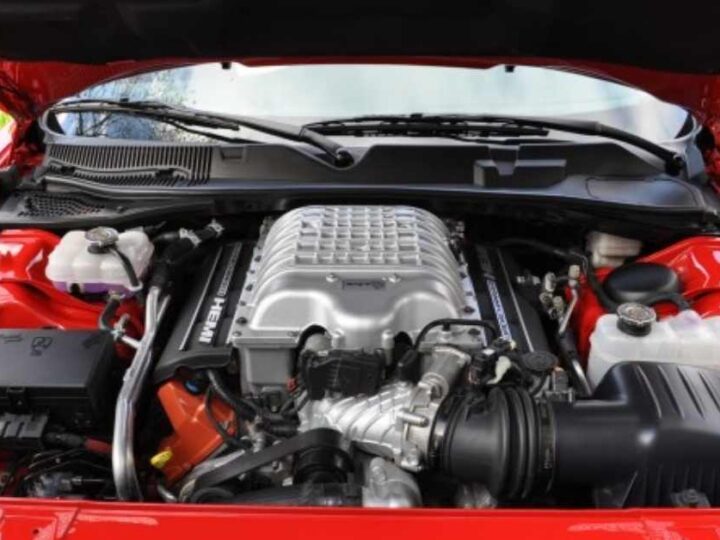When venturing into the exhilarating world of automotive customization, few modifications capture the imagination quite like an engine swap. For enthusiasts of Chevrolet vehicles, exploring the myriad possibilities of engine compatibility can lead to a thrilling journey of performance enhancement and personal expression. This guide delves into the essentials of the Chevy engine swap compatibility chart, detailing key components, swap types, and factors vital to a successful engine transplant.
At its core, an engine swap involves replacing a factory-installed engine with one that is more powerful, efficient, or simply more appealing to the owner’s desires. This can breathe new life into an older vehicle, elevate performance, and even imbue it with a unique character. The compatibility chart serves as a foundational reference, presenting a matrix of available engine options across various Chevy models. Understanding this chart is crucial for anyone considering an engine swap.
Understanding the intricacies of engine compatibility begins with recognizing the major engine families. The most notable engine types in the Chevy lineup include the Small Block, Big Block, and LS series engines. Each of these engines exhibits distinct attributes that influence their compatibility with specific vehicle models. The Small Block, celebrated for its versatility and lightweight design, is often the go-to choice for enthusiasts seeking boosted horsepower without sacrificing handling. Conversely, the Big Block is revered for delivering substantial torque and sheer power, ideal for heavier vehicles or performance builds. The LS series, renowned for its modern engineering and efficiency, has become a popular swap option due to its availability and robust aftermarket support.
Once the engine type is selected, the next step involves determining which chassis can accommodate the desired swap. Classic Chevy models like the Camaro, Nova, and Chevelle provide an extensive playground for engine enthusiasts. These vehicles, often referred to as “muscle cars,” possess ample room for engine modifications and upgrades. Novice swappers should consult the compatibility chart specific to their model year, as dimensions and mounting points can vary significantly across generations. For instance, a 1969 Camaro might present different swapping challenges than a 1979 variant, despite sharing the same iconic silhouette.
In terms of the swap process, one must also factor in the transmission requirements. Not all engines seamlessly align with every transmission. Selecting the right transmission is paramount; it often goes hand-in-hand with the engine choice, influencing overall performance and drivability. When selecting a GM transmission, compatibility with the engine’s output and intended application—be it off-road, street, or competition—should weigh heavily on decision-making.
Equally important to consider are the peripheral components that accompany an engine swap. Engine mounts, oil pans, and exhaust systems play critical roles in ensuring a smooth installation and optimal performance. For instance, swapping a newer LS engine into a classic car may necessitate custom engine mounts to accommodate the difference in engine design and dimensions. Similarly, the exhaust system must be modified to ensure it can navigate the unique layout of the new engine.
After considering physical compatibility, it is essential to consider the electronics involved in modern engine installations. Many contemporary swaps incorporate advanced engine management systems that govern fuel delivery, ignition timing, and performance data. When swapping to an LS engine, for example, one might need to integrate a compatible ECU (engine control unit) and wiring harness to fully unlock the engine’s capabilities. This can sometimes pose a challenge, especially for those who may prefer to keep things simpler with their upgrades.
Notably, the engineering and modification aspect doesn’t end with merely fitting the new engine. Cooling systems also require careful attention to detail. An upgraded radiator or performance cooling solution might be necessary to handle the increased heat output of a more powerful engine. Also, considering the type of fuel required is crucial; some engines benefit from higher octane fuel to optimize efficiency and performance.
Let’s not overlook the significance of legal considerations and emissions regulations when embarking on an engine swap. Local laws governing emissions can dictate what engines can be installed in certain models. Many states have distinct regulations to ensure vehicles adhere to environmental standards, which can limit some swap possibilities. It is wise to familiarize oneself with these regulations before initiating any changes.
Finally, the emotional connection many enthusiasts have with their vehicles adds layers of personal satisfaction to the engine swap process. Renowned for modding culture, a Chevy engine swap often embodies a blend of nostalgia and innovation, allowing one to create a unique vehicle that tells a story. Whether the swap serves to revive a classic or to elevate a modern vehicle into a performance powerhouse, it bridges the gap between past and present automotive technology.
In summary, the path to a successful Chevy engine swap is both exhilarating and intricate, demanding a thorough understanding of compatibility principles, components, and regulations. Armed with a reliable compatibility chart and knowledge about the various aspects of engine swapping, enthusiasts can embark on their journey confident in their ability to elevate their driving experience. Always remember: while the machine taming can be rigorous, nothing rivals the satisfaction of unfolding the hood of your personal masterpiece, knowing that the heart of the beast now benevolently roars with newfound vitality.
